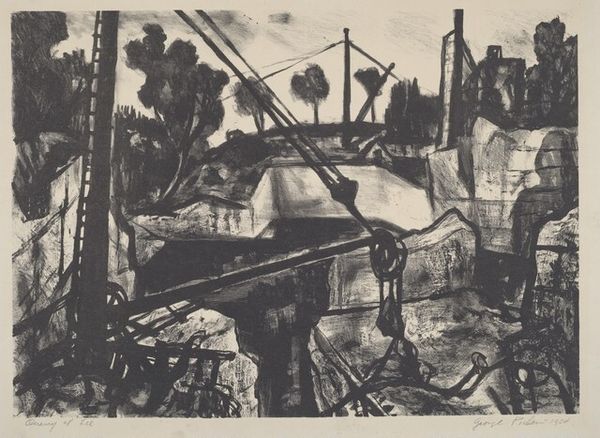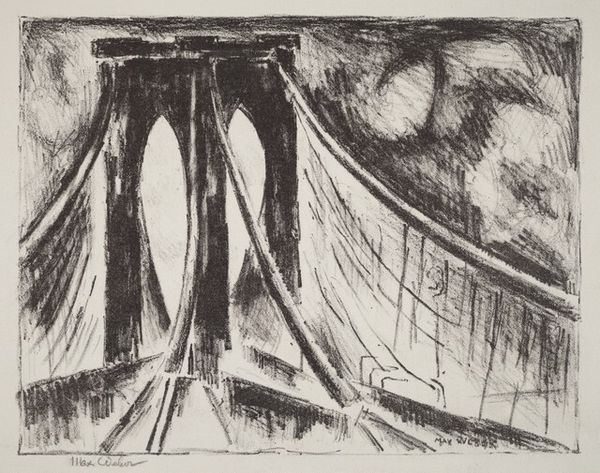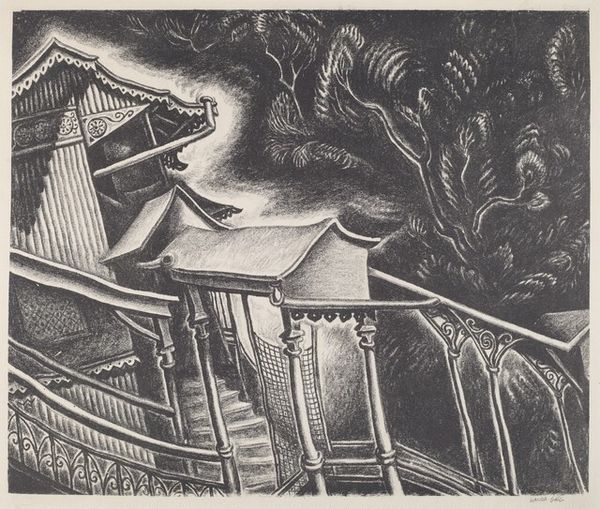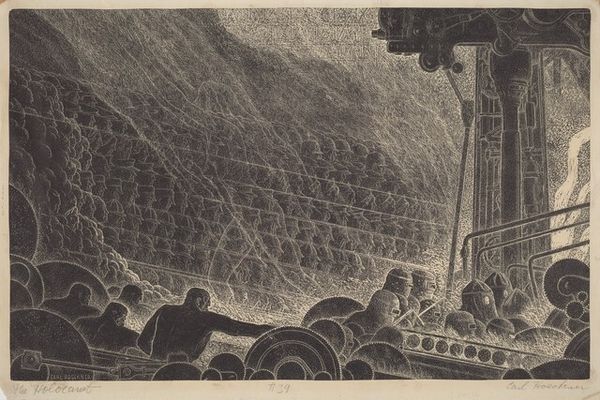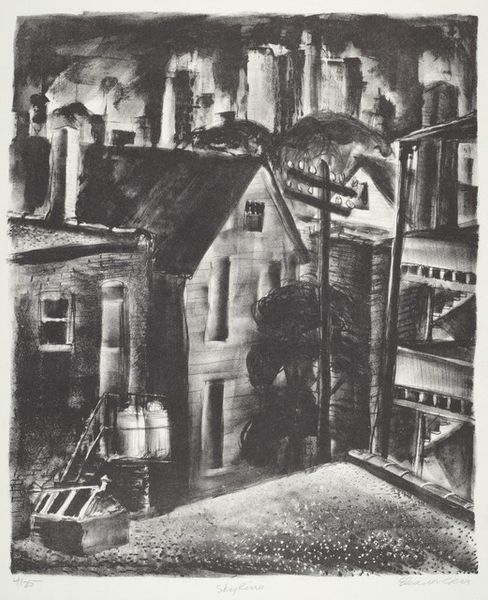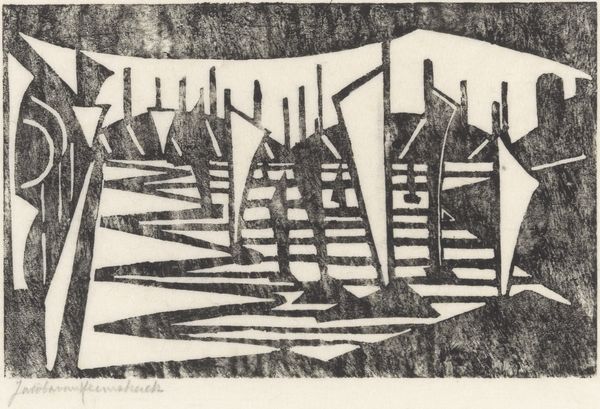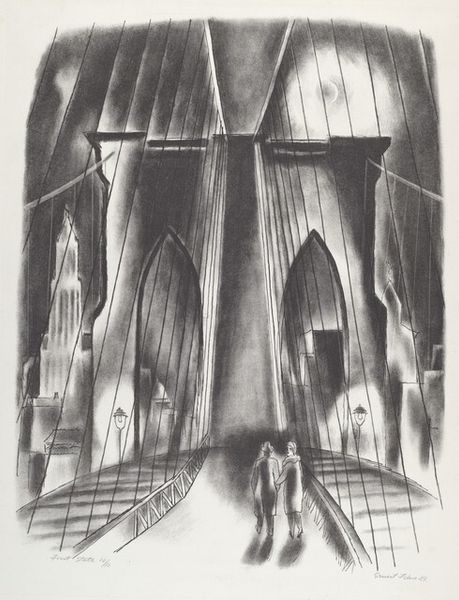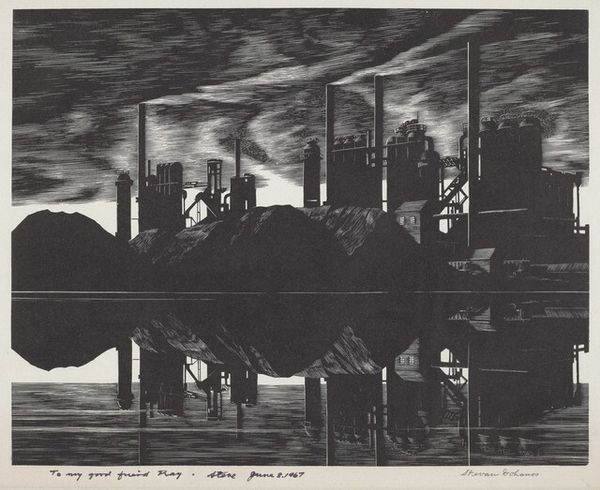
drawing, print, graphite
#
drawing
# print
#
pencil sketch
#
charcoal drawing
#
social-realism
#
pencil drawing
#
graphite
#
cityscape
Dimensions: image: 365 x 475 mm sheet: 402 x 582 mm
Copyright: National Gallery of Art: CC0 1.0
Curator: I am immediately struck by the raw emotionality. There is a striking tension between the monumental architectural forms and the huddled masses. Editor: This is Ida York Abelman’s piece titled "North of Wall Street". The piece appears to be a drawing or print made with graphite, perhaps also charcoal. Curator: Graphite! It seems incredibly fitting, given the subject matter. The work's textural variety is incredible, considering it seems primarily made using dry media. Abelman utilizes hatching, cross-hatching, and stippling to simulate the appearance of tonal variation and evoke spatial depth, right? Editor: Indeed. Social Realism informed her subject matter. The looming structure feels oppressive and evokes anxiety in the viewers as they ponder those human figures. Given the title, what do you imagine was its purpose? Who was its target audience? Curator: Social Realism often speaks to—and champions—the plight of the working class. There's a strong sense of enclosure, a looming verticality. Those compressed figures! I see an intersection of structure and chaos here. It makes me reflect upon power and the social stratification manifested by the 1929 crash, which may be symbolized by a deconstructed architectural structure. What are your thoughts about its intended impact? Editor: It's clearly intended to critique—to expose a deep systemic vulnerability after the Wall Street Crash. But it's the ambiguity that is striking, in my opinion. Who exactly are those people clustered beneath the bridge? Victims? Speculators? Bystanders? They become almost archetypal figures, emblems of human vulnerability. Their eyes are almost confrontational, don't you think? They appear as silent witnesses that break the fourth wall with spectators from later eras like ours. Curator: Agreed. They destabilize our position as viewers; we are made complicit. A striking inversion, indeed. The interplay between shadow and light amplifies the scene's drama and complexity, thus adding a layer of interpretive potential that enhances the intended message, whether historical or architectural. Editor: Thank you. Now, as we move to our next artwork, consider how each piece uses its visual language to elicit critical thought.
Comments
No comments
Be the first to comment and join the conversation on the ultimate creative platform.
